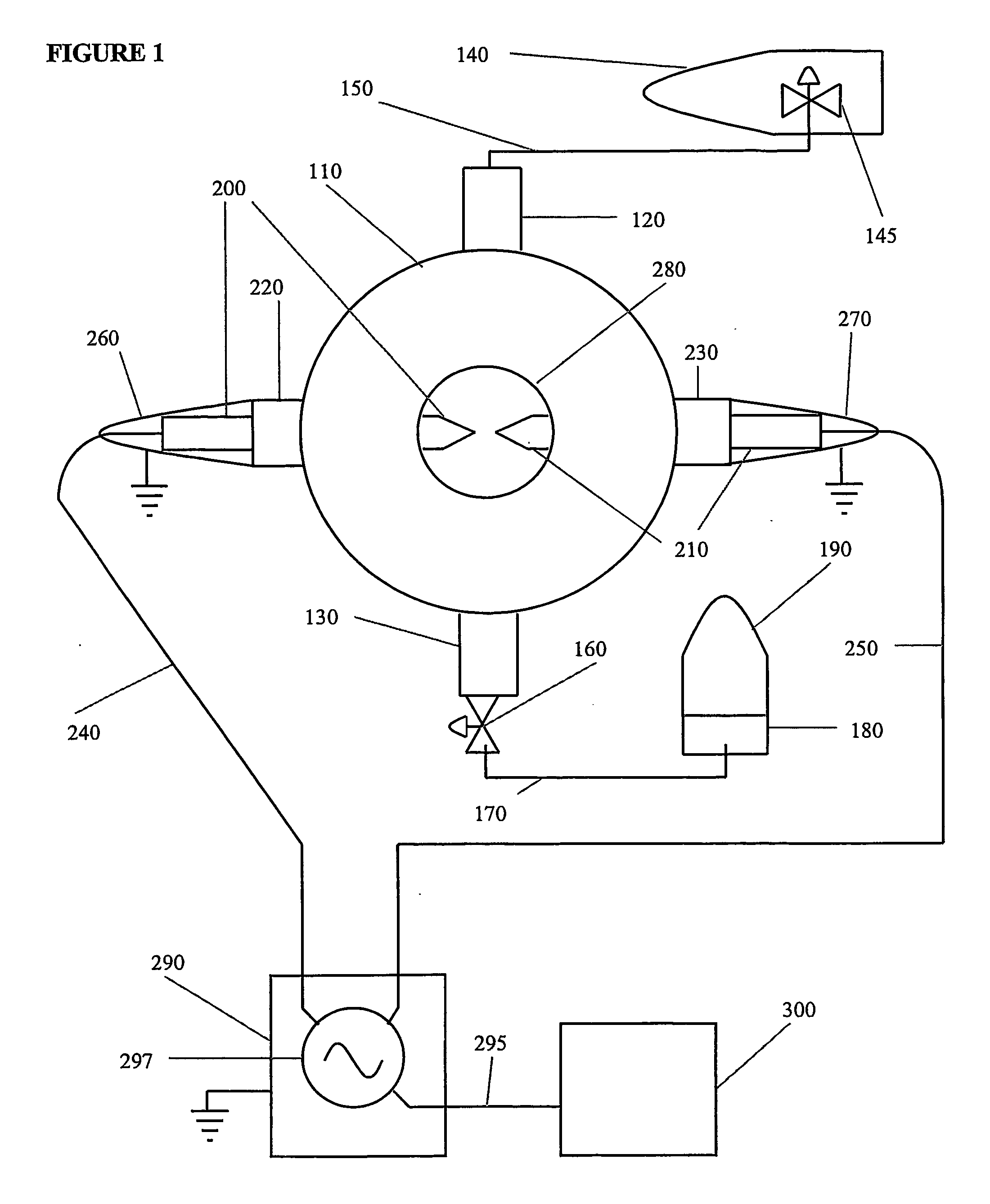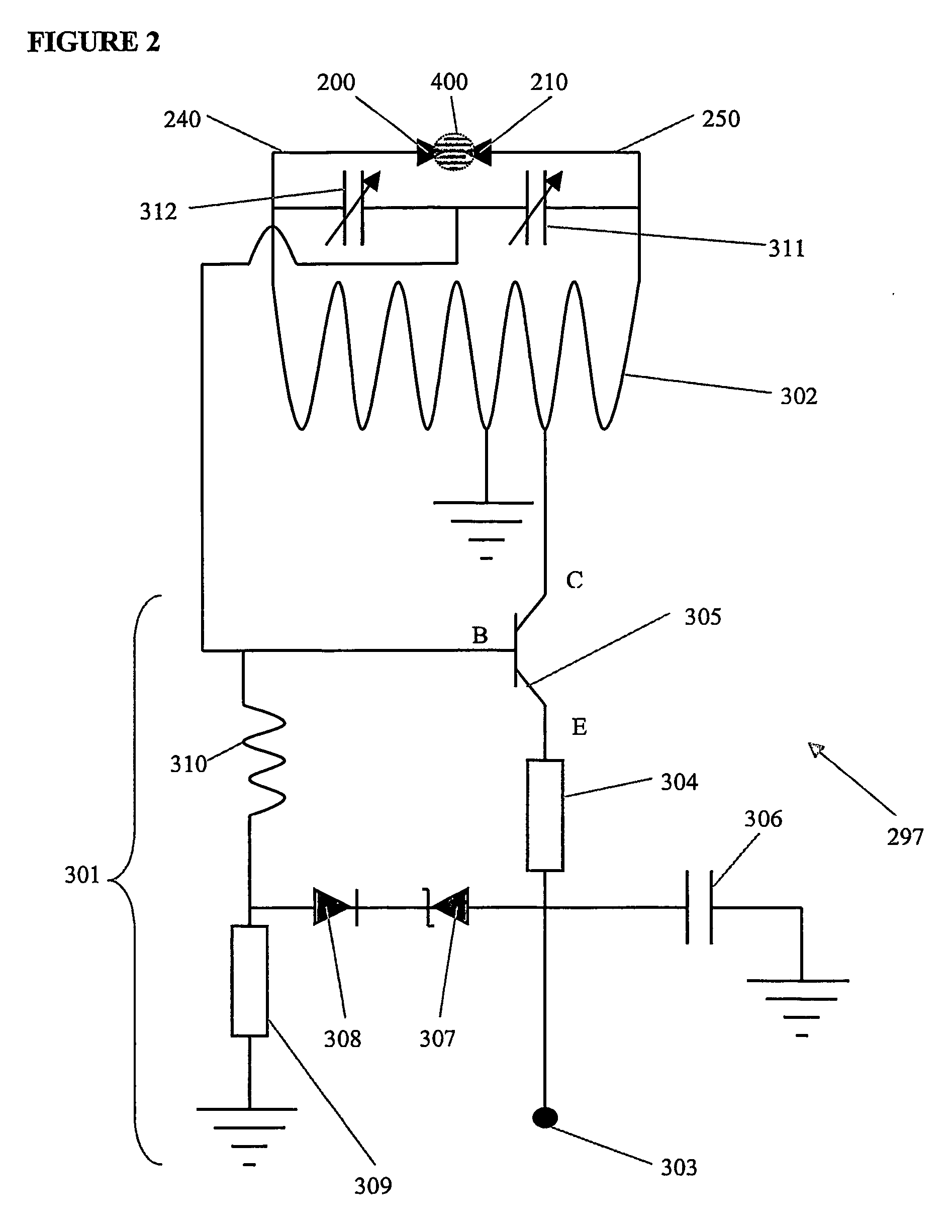High frequency driven high pressure micro discharge
a high-pressure, micro-discharge technology, applied in gas-filled discharge tubes, gaseous cathodes, solid cathodes, etc., can solve the problems of insufficient electric field to substantially ionize gas, high brightness of light sources with such short wavelengths, and insufficient light output power and light intensity limits, etc., to achieve the effect of increasing heat transfer and reducing the intensity of processes
- Summary
- Abstract
- Description
- Claims
- Application Information
AI Technical Summary
Benefits of technology
Problems solved by technology
Method used
Image
Examples
example 1
[0059] 68% He, 30% Ar, and 2% F2 at 500 mbar total pressure was used to form the ArF* excimer and produce 193 nm light, with brass needle tip electrodes as shown in FIG. 3. The gas flow through the chamber was less than 60 sccm flow of the gas. The voltage was set at 24 volts at the power supply, supplying −24 volts to the oscillator circuit. FIG. 6 shows the intensity of the output from the apparatus vs. the wavelength output from the apparatus, and FIG. 7 shows the light power output of the apparatus over a period of time. Similar results were obtained using less rounded brass electrodes at about 1 bar total pressure and at 30 volts at the power supply.
example 2
[0060] Pure Xe of research grade at 800 mbar total pressure was used to form the Xe2* excimer and produce 172 nm light. There was no gas flow. The voltage was set at 32 volts at the power supply, supplying −32 volts to the oscillator circuit. Electrodes having spheroidal ends as illustrated in FIG. 5 were used, with the spheroidal ends being about 1 mm in diameter. The electrodes were made of stainless steel and, they were separated by about 0.5 mm to about 1 mm. FIG. 8 shows the intensity of the output from the apparatus vs. the wavelength output from the apparatus, and FIG. 9 shows the power output of the apparatus over a period of time.
example 3
[0061] Pure Kr of research grade with a total pressure between about 300 mbar and 1 bar was used to form the Kr2* excimer and produce 145 nm light. There was no gas flow. The voltage was set at 32 volts at the power supply. Electrodes having spheroidal ends (FIG. 5) were used, with the spheroidal end being about 1 mm in diameter. The electrodes were made of stainless steel and, they were separated by about 0.5 mm to about 1 mm. FIG. 10 shows the intensity of the output of the apparatus vs. the wavelength output from the apparatus.
PUM
 Login to View More
Login to View More Abstract
Description
Claims
Application Information
 Login to View More
Login to View More - R&D
- Intellectual Property
- Life Sciences
- Materials
- Tech Scout
- Unparalleled Data Quality
- Higher Quality Content
- 60% Fewer Hallucinations
Browse by: Latest US Patents, China's latest patents, Technical Efficacy Thesaurus, Application Domain, Technology Topic, Popular Technical Reports.
© 2025 PatSnap. All rights reserved.Legal|Privacy policy|Modern Slavery Act Transparency Statement|Sitemap|About US| Contact US: help@patsnap.com



